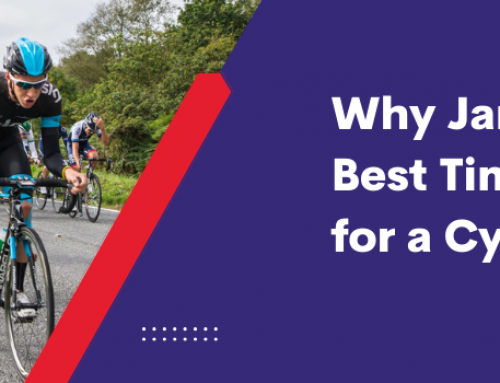Keeping your bike in good working order is really important for general bike health and for preventing bigger problems developing. If you have signed up to our London to Brighton Cycle 2024 you will want to make sure your bike is in tip top condition, ready for an incredible day of cycling, and plenty of training beforehand!
A full list of permitted bikes can be found on our website www.londontobrightoncycle/faqs. Please make sure you check this list well in advance so you can make sure your bike is suitable and working well.
Our mechanics will be happy to help along the route to assist with any difficulties you have during the ride, but please do bring some patch kits, spare inner tube and a pump to inflate it, as well as any spare parts you think you may need. Our mechanics are often very busy, riders will need to be able to take care of their own punctures leaving our mechanics to be available for others issues to keep the maximum number of riders able to complete the course.
ABC Check
A is for air: properly inflated tires will help prevent them from going flat. Invest in a decent pump and check the inside of your tire for the recommended tire pressure. They should feel as firm as a fully inflated basketball. Also check for any cracks or excessive wear on your tyres.
B is for brakes: when the brake levers are squeezed, they should stop the bike from moving when pushed forward or pulled backwards. Also the brake levers should stop short of the handlebars, leaving about a thumb with between them.
C is for chain: your chain should move freely, be free of rust and kept lightly oiled. If you run your finger along it, it should get some oil on it. Purchase a suitable bike lubricant and apply to the chain, adding roughly one drop per link.
Keep it Clean
Firstly rinse your bike all over with warm water to dislodge any mud or dust. You can use a sponge or garden hose, avoid high pressure hoses as sometimes they can damage crucial components. Next, focus on the drivetrain. It is best to use chain cleaner or citrus degreaser and a firm bristled brush to scrub the chain. Then clean the cassette and derailleurs in the same way. Now you have got the greasy bit out of the way, you can wash the rest of the bike using hot water and dish soap or preformulated bike cleaner.
Wipe every part down with a dry cloth, then be sure to re-lubricate your chain, derailleurs and pivot point on the brakes (not the brake pads).
Learn to Fix a Puncture
You will need:
- Tyre levers
- Bike pump
- Spare inner tube or patch kit
- Spanner or allen key (if not quick release)
- Gloves
- Before removing your rear wheel, shift to the hardest gear (smallest cog) on the cassette. If you have quick release wheels, remove the wheels from the skewer. If not, then you will need an allen key or spanner. When removing the rear wheel, gently pull back the derailleur to release it from the chain. If removing the front wheel, gently place the forks on the ground being careful not to damage them.
- Once you have removed the wheel, you will need to deflate the tyre in order to remove the inner tube from the rim. For Presta valves you will need to unscrew the nut at the end of the valve and press it in to release air. For Shraeder valves, press down the pin in the middle of the valve to deflate it.
- To access the inner tube you will need to partially lift the tyre from the wheel. To do this, insert a tyre lever under the edge of the tyre on the opposite side to the valve, you can hook the lever to one of the spokes to keep it in place. Keeping the first lever secured, take the second lever and run it under the edge of the entire tyre to loosen it fully.
- You will then be able to remove the inner tube easily. Make sure to remove any nails or glass that may have caused the puncture first. To identify the location of the puncture, inflate the tube with some air first and you should be able to see where it has split. Next, see where the puncture is in relation to the valve in order to locate the puncture in the tyre or run your finger around the inside of the tyre, making sure to remove any objects stuck in the tyre.
- Using the sandpaper provided in patch kit, roughen the area you are about to fix to help the glue stick better. Apply some glue then cover the puncture with the patch provided and wait a few minutes for it to dry. To check that its airtight, inflate with a little air.
- Alternatively, if replacing the inner tube, tuck the tube inside the tyre starting near the valve and working all the way round. If difficult to manage, inflate with a little air to make it easier to put back on the wheel.
- Next, put the tyre back on starting at the valve, tuck the edge of the tyre onto the rim. Using your thumbs go around the wheel pushing the edges back onto the rim.
- Finally inflate your tyres to the recommended pressure found on the inside of the tyre and put the wheel back on your bike.
Get Your Bike Serviced
It is important to get your bike serviced at least 1-2 times a year. A minor problem can turn into something bigger and more costly if it is not dealt with in good time. In addition to regular maintenance, here are some signs to look out for when your bike is in need of some attention:
Brakes if your brakes feel sluggish or you’re having to squeeze the levers really hard, its time to get them looked at. Brake cables stretch over time and brake pads wear down which can affect your ability to stop safely.
Spokes listen out for any spokes that rattle when the wheels are spinning. Check for any loose spokes by squeezing two together at at time.
Noises bikes should be quiet when you ride them. Take notice of any squeaking, rattling or grinding sounds as this could be an indication that something needs fixing.
Tyres cracks in the tyre or sidewalls, faded tread pattern and bald patches are key things to look out for when checking tyres. Spotting these in advance and replacing the tyres can prevent you from getting stranded due to punctures.
Chain if you are having any problems with your chain slipping off or trouble changing gears, be sure to get your bike looked at by a professional.





